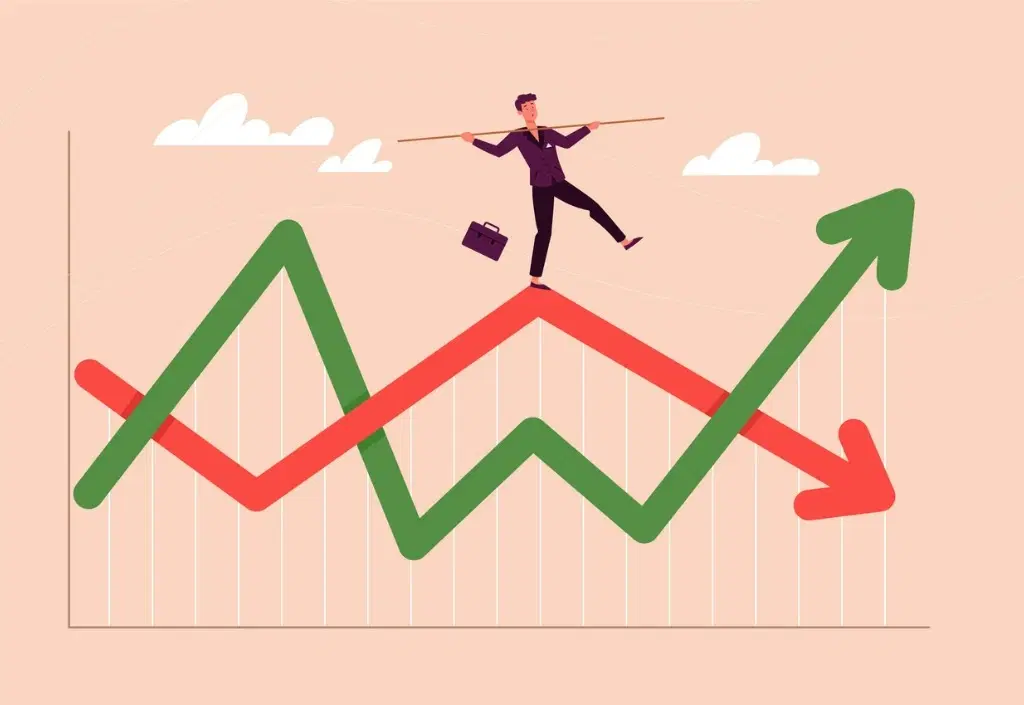Understanding ETFs and Stocks
10 min read

If you are just starting to invest, it is worthwhile to understand what an ETF is and how it differs from an individual company stock. An ETF, or exchange-traded fund, is an investment product that consists of securities, such as stocks. ETFs are bought and sold on stock exchanges throughout the day, the same way individual company stocks are. Since the first ETF launched in 1993, ETFs have become a staple for many investors. They are known for being low-cost and relatively easy to understand, and ETFs typically provide more investment diversification than exposures to individual company stocks.
Individual company stocks represent partial ownership of a company. Companies issue shares of stock to raise money from investors, who in exchange get an ownership interest in the company. Like ETFs, individual company stocks that are public trade on exchanges. They enable investors to share in the issuing company’s successes when the stock price increases and/or when the company issues dividends to shareholders. On the other hand, a company’s troubles tend to cause its shares to drop in value. As a whole, the stock market serves as a barometer that indicates how the economy is doing and how it might move next. Stock prices affect shareholders and ETF investors.
This article will explain basic ETF, stock, and general shareholder principles to help you understand the role these securities play in the financial system, and how we can use them to help serve humanity.
Terminology
Fund: A pool of money designated for a purpose. An ETF’s purpose can be to follow an index or to achieve another goal that it states in its prospectus document.
Index: A hypothetical portfolio of investments. A way to track how a basket of securities performs in a standardized way. An ETF manager might use an index to guide their investment choices or understand their fund’s performance.
Fund manager: The person or team that buys and sells securities to manage the fund. They implement the fund’s investment strategy.
NAV: Net asset value. The value of all an ETF’s underlying holdings at the end of each day.
AUM: Assets under management. AUM is the total market value of the investments in the fund.
Expense ratio: Fund costs divided by fund AUM. There are costs associated with managing a fund, which investors cover with a percentage of their assets invested in the fund. This ratio is regarded as the overall cost of having money invested in the fund per year.
Dividend: A payment from an individual company to its shareholders. A company might decide to distribute some of its profits in the form of a cash payment to its shareholders, which often can be reinvested into additional stock of the issuer company. This is something ETFs also receive, being shareholders of individual companies, which they typically pass through to the ETF’s investors.
Liquidity: How easily you can exchange an asset or security for cash at its current market price.
Diversification: Managing risk by creating a varied portfolio. Using a combination of stocks, bonds, cash, or other investment vehicles helps to diversify. So does investing in different industries, or different countries. ETFs are associated with diversification because they allow fund managers to spread risk across a mix of securities within the fund.

What affects the price?
On stock exchanges, an ETF looks very similar to an individual company stock. It has a ticker, its price changes throughout the day, and you can buy it the same way you would buy shares of a company. What causes an ETF’s price to change? First, as the ETF is made up of stocks, the prices of the stocks within the fund affect the ETF’s value. This can also be described as the net asset value, the value of all the assets in the ETF. The second factor is supply and demand of the ETF itself. Just like stock prices, ETF share prices are pushed upwards when there is a high demand and are pushed downwards when there are more sellers than buyers.
As for individual company stocks, share prices are mostly driven by supply and demand. A share price represents how much investors think the company is worth. Fundamental factors, such as a company’s book value or earnings per share, form some basis for how much a viable company might be worth. But demand is also driven by expectations for the future. You may notice that price movements in individual company stocks can react to news or current events that might affect the company, or general market sentiment. Stock prices matter to both individual company stock investors and ETF investors because stock prices drive the value of both investments.
Shareholder voting
For investors who want to be involved in company decisions, this is an important point to consider. ETF investors do not own shares in any of the underlying stocks that comprise the ETF. Typically, the fund manager holds the voting power associated with those shares. Institutional ETF issuers such as BlackRock, Vanguard, and Fidelity manage many ETFs, which helps them have a big say in some companies’ decisions. Some issuers tend to vote in favor of ESG initiatives while others actively oppose them, and some issuers decide not to vote at all. If you are a socially conscious ETF investor or otherwise want to have a say, it is key to choose a fund manager who votes in a way that aligns with your values.
Alternatively, if you are a stockholder, you have the right to vote your individual stock holdings. Votes can affect corporate policies, board member selection, and executive pay. This can be a great way to participate if you take the initiative to do so. A study showed that only 32% of retail investors’ votes are cast each year. Part of choosing between individual company stocks, ETFs, and other investment vehicles is assessing whether you will vote, as a stock investor, or how well your fund manager represents your opinion when they vote on your behalf, as an ETF investor.
Types of ETFs: indexed and actively managed

You may have heard about index funds. These can be mutual funds or ETFs, and there can be mutual funds and ETFs that track the same index. ETFs that are index funds are designed to track a specified basket of underlying investments. Whatever the index, ETF investors can see the stocks and other holdings inside their ETF because most ETFs disclose them daily. This is one of the reasons ETFs are known for their transparency. Indexed ETFs are often considered passively managed because indexes, and thus the securities that comprise them, tend not to change quickly or drastically. This translates to lower operating costs and may allow funds to offer a lower expense ratio, which can be attractive to investors.
What about flexibility? ETFs do not have to track an index. Some funds are actively managed, so the fund manager can pick and choose which securities to include and when to trade them for the fund. While this type of ETF may use a benchmark index as a guide, the additional flexibility allows them to get out of unfavorable stock positions quickly and try to have higher returns than the market average. Managing this type of fund requires more timely research which can mean higher expense ratios for investors.
Types of stocks: common and preferred
Stocks are among the most basic types of investments, but there are still some variations. By default, conversations about equity refer to common stock. Preferred stock is a different class of shares, so someone placing orders to transact in preferred stock would use a different ticker than for common stock of the same company. These shareholders receive more reliable dividends than common stock shareholders and are higher in the pecking order that determines which classes of company shareholders are paid dividends first. The tradeoff is that preferred stock shareholders forgo any voting rights. In these ways, preferred stock sits between common stock and bond investments.
Share classes are often marked by letters, such as Class A or B common stock. One is not necessarily better than another. The letters signify a difference in voting rights or people eligible to own the shares. This is not to be confused with restricted stock, which can be shares rewarded to employees with strings attached. In addition, people often group common stocks into categories or subclasses such as growth, value, or large-cap.

ETFs and individual company stocks are both investment vehicles that can be part of a sustainable investment portfolio. Investors can choose to do their own research, or to choose a fund manager who specializes in ethical investing to align their investments with their values.
At Humankind Investments, we’re focused on taking a socially responsible approach to investing. Our mission is to invest, and to encourage others to invest, in the manner that is best for humanity. That is why we created our own Humankind US Equity Index based on our quantitative research into companies’ impact on humans. As an investment adviser that specializes exclusively in socially responsible investing, we also use voting rights to help companies make a more positive impact. We work to try and encourage companies to improve on the value that they provide humanity, and in doing so we use ETFs and individual company stocks for the purpose of serving humanity.
Published on June 10, 2022.
References
Brav, A., Cain, M., & Zytnick, J. (2019, November). Retail Shareholder Participation in the Proxy Process: Monitoring, Engagement, and Voting. From Harvard Law School Forum on Corporate Governance: https://corpgov.law.harvard.edu/2019/11/19/retail-shareholder-participation/
Brav, A., Cain, M., & Zytnick, J. (2021, June). Retail Shareholder Participation in the Proxy Process: Monitoring, Engagement, and Voting. ECGI Working Paper Series in Finance. ECGI. From https://ecgi.global/sites/default/files/working_papers/documents/bravcainzytnickfinal.pdf
Chen, J. (2022). Exchange-Traded Fund (ETF) Guide. From Investopedia: https://www.investopedia.com/terms/e/etf.asp
FINRA. (2022). Types of Stock. From FINRA: https://www.finra.org/investors/learn-to-invest/types-investments/stocks/types-of-stocks
Hayes, A. (2022). Stock Definition. From Investopedia: https://www.investopedia.com/terms/s/stock.asp#:~:text=A%20stock%20is%20a%20form,of%20stock%3A%20common%20and%20preferred.
Under no circumstances should any information in this article be used or construed as an offer to sell, or a solicitation of an offer to buy, any securities, financial instruments, investments or other services. Furthermore, no information in this article should be construed or relied upon as investment, legal, accounting, tax or other professional advice or in connection with any offer or sale of securities.
About the Author
Kristina Bjorksten is an Operations Analyst at Humankind Investments, whose ambition is to make companies more sustainable and enhance the quality of life for humankind. She gained her industry experience at a broker-dealer and brings fresh ideas and an international lens to her role. She studied economics, earning her Master’s in European Economic Studies from the College of Europe and her Bachelor’s in Economics from UC San Diego.
Get the latest posts in your inbox
I agree to the Terms of Use and acknowledge that I have read the Privacy Policy.